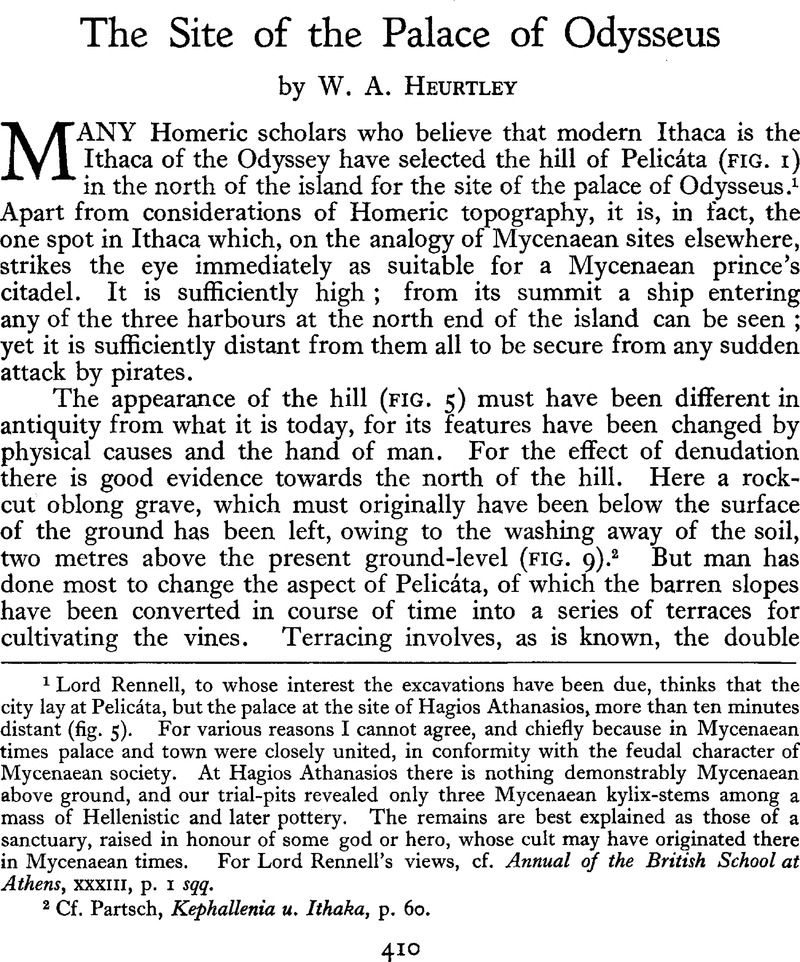No CrossRef data available.
Published online by Cambridge University Press: 02 January 2015

1 Lord Rennell, to whose interest the excavations have been due, thinks that the city lay at Pelicita, but the palace at the site of Hagios Athanasios, more than ten minutes distant (fig. 5). For various reasons I cannot agree, and chiefly because in Mycenaean times palace and town were closely united, in conformity with the feudal character of Mycenaean society. At Hagios Athanasios there is nothing demonstrably Mycenaean above ground, and our trial-pits revealed only three Mycenaean kylix-stems among a mass of Hellenistic and later pottery. The remains are best explained as those of a sanctuary, raised in honour of some god or hero, whose cult may have originated there in Mycenaean times. For Rennell’s, Lord views, cf. Annual of the British School at Athens, 33, p. I sqq.Google Scholar
2 Cf. Partsch, Kephallenia u. Ithaka, p. 60.
3 Of the other areas cleared, III was rather similar to those described ; in II and v rough cobble pavements lay just below the surface, I contained pithos-burials lying below collapsed house-walls. All, except V, which was lower, were within or just on contour-line 150 (fig. 2).
4 i.e., the ‘granary’ style phase (for which Gjerstadt has suggested the name LH IV), which the evidence from Cyprus and Palestine shows to belong to the twelfth century, rather than to the eleventh. Cf. Quarterly of the Department of Antiquities in Palestine, vol. v, p. 109.
5 Cf. ’ΑρχαιολογικήΈφημερίς, 1932, pl. V, especially 14.
6 Cf. note 4. No ‘granary’ style pottery was found.
7 Or its apparent line. Cf. next paragraph.
8 But not, of course, impossible.
9 The places are marked x in FIG. 2.
10 On the west, near contour-line 150.